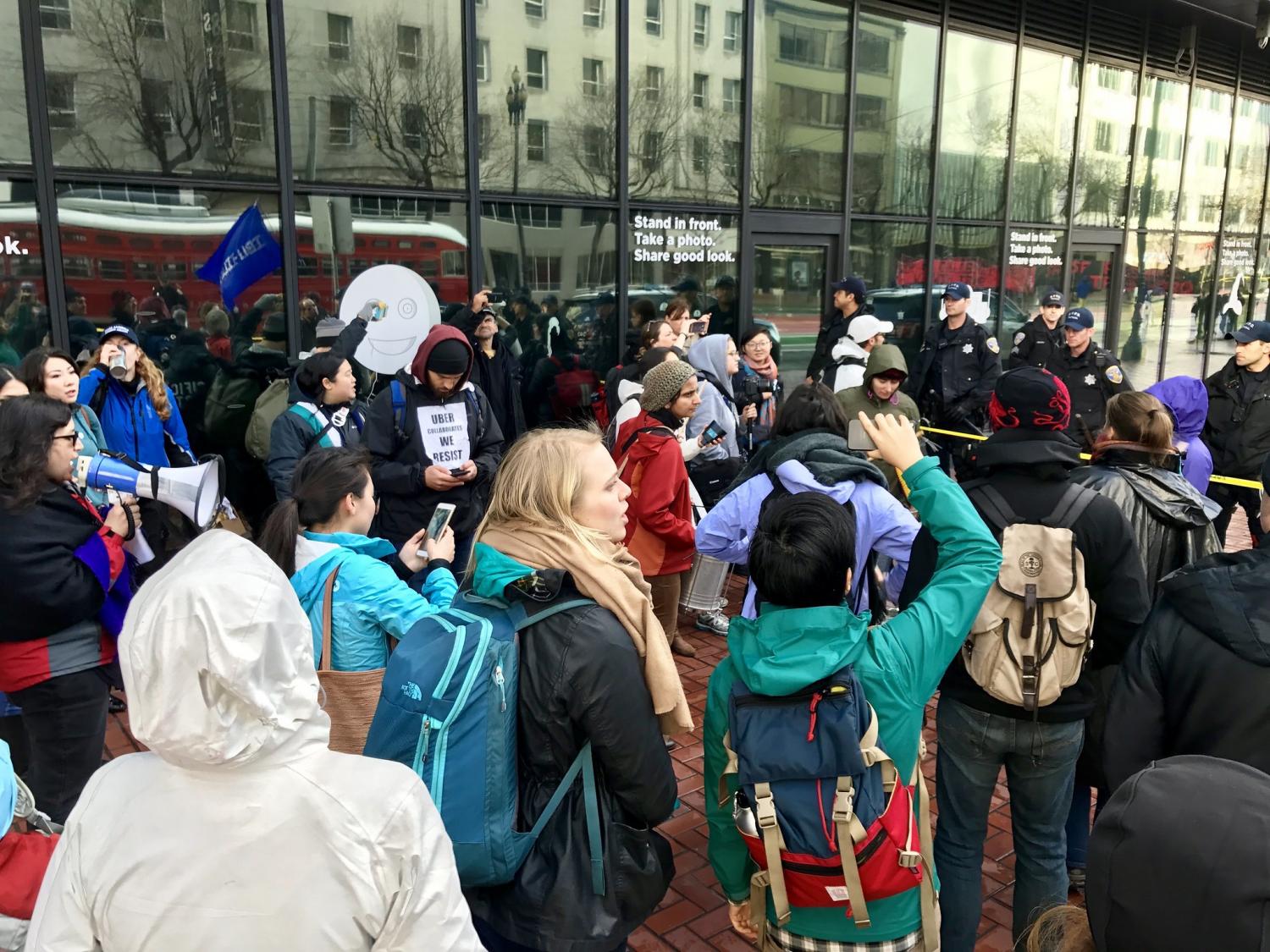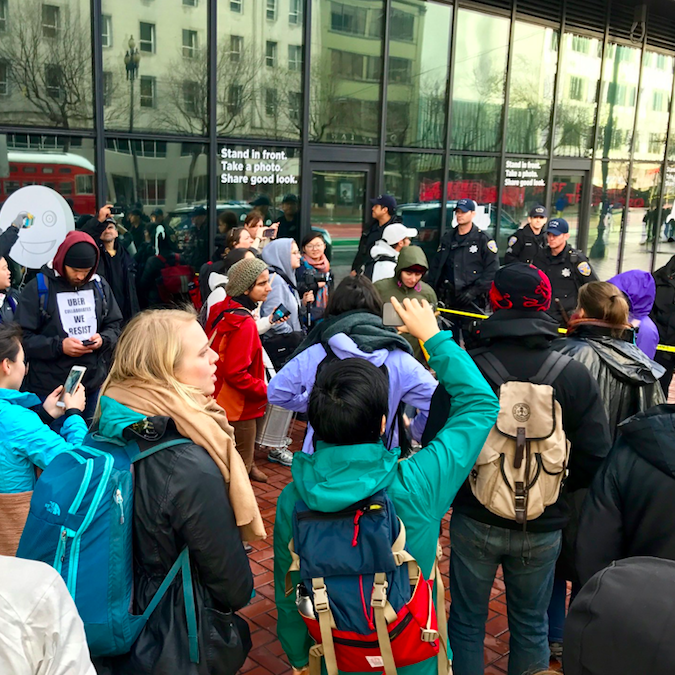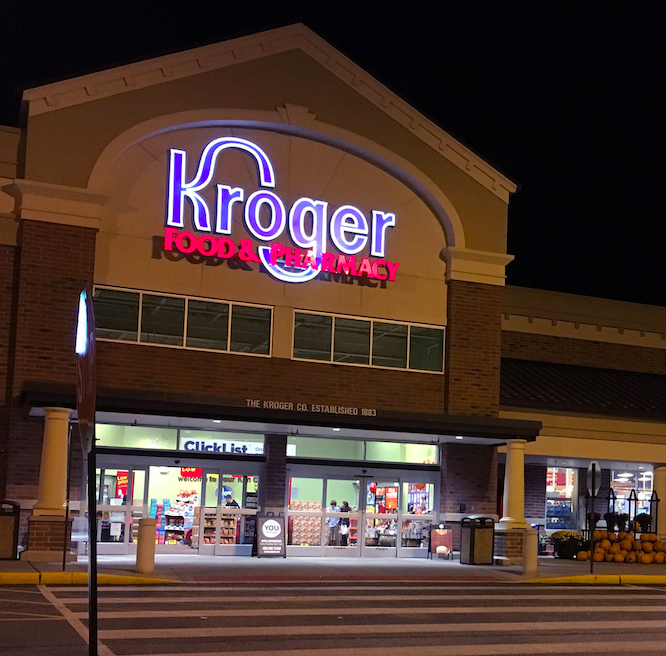Businesses and Educators Come Together to Transform the High School Experience


Four years ago, things did not look good for Banneker High School in Fulton County, Georgia, about 15 miles south of Atlanta.
It was performing in the bottom 5 percent of all schools in the state. Six out of 10 students did not graduate. Teacher retention was abysmal, and an estimated 97 percent of students lived in poverty. The future for many of the students was bleak, and they knew it.
“It just seemed as though there wasn’t anything here for kids that would provide a real solution,” reflects Banneker’s principal, Dr. Duke Bradley. “School—the very place created to build opportunity and hope—was actually fueling this epidemic. The community had lost confidence in the school.”
Fast-forward to 2019 and things at Banneker are very, very different. The graduation rate has increased by 47 percent—the highest growth in graduation rates among all 16 traditional public high schools in Fulton County. And, in less than two years, Banneker dropped off the state’s failing school list and is no longer eligible for state intervention.
“When I walk the halls, I can feel it,” Dr. Bradley says. “There is pride.”
This is the story of how a school failing its students, its teachers and its community was reborn, transformed by passionate and innovative organizations and individuals united around the belief that equitable access to high-quality education is the gateway to economic mobility. Together, these partners—the Fulton County School System, local businesses and a new organization called 3DE—continue to systemically re-engineer the education system not only at Banneker, but also at an expanding number of schools, to better reflect the real world and prepare students for life beyond the classroom.
Schools failing students: How corporate America gets involved
There is no simple answer to why schools fail. Lack of budgets, over-crowded classrooms, the digital divide, and outdated teaching practices are just a few leading culprits cited by pundits on both sides of the aisle.
What is clear is that there is a problem in the U.S. education system.
Take for example, that only two U.S. states have high-school graduation rates above 90 percent, and 15 states graduate less than 80 percent of their students. American high-schoolers are also more likely to be absent from school compared to their peers in other developed countries, with chronic absenteeism rates exceeding 30 percent in some cities. For schools in low-income communities, the rates are even more staggering. And where there is innovation, it often happens in pockets and not in a systematic way across schools and education systems.
The result doesn’t just affect students—it also affects corporate America, which is facing a growing shortage of skilled workers.
Just down the road from Banneker High School are gleaming buildings with manicured grounds, global headquarters of companies such as Chick-fil-A, Coca-Cola, Home Depot, SunTrust Bank and Delta Air Lines.
As far back as 2014, each of these companies had identified education as a critical focus. They realized that their local schools—and schools across the nation—were in trouble.
For these companies, getting involved wasn’t simply a nice way to give back; education had become a business imperative. They realized that if U.S. communities fail to thrive, so would they. To operate successfully, companies need vibrant communities with consumers ready to purchase their products and services, as well as a steady pipeline of skilled workers to fill their offices, fulfillment centers and manufacturing sites. Increasingly, this is becoming a struggle. According to the youth development nonprofit Junior Achievement, 49 percent of U.S. employers say that talent shortages affect their ability to serve clients and customers.
Businesses around Banneker were hungry to engage in education, but were searching for a meaningful way that would drive outcomes.
An idea emerges from a simple conversation
It all started in 2013 with a conversation with then-superintendent of Fulton County Schools, Dr. Robert Avossa, and Junior Achievement of Georgia President Jack Harris. Junior Achievement (JA)—founded exactly 100 years ago this year—is one of the nation’s largest and most successful nonprofit organizations dedicated to strengthening student achievement. Both Dr. Avossa and Harris saw an opportunity to work in partnership to develop a solution to address systemic issues.
Their vision became 3DE: a joint venture between school districts, 3DE by JA, and the broader business community. Together, they set out to re-engineer high school education and, in the process, improve student engagement, accelerate academic outcomes and develop competencies necessary to excel in today’s workforce.
“Our goal was to develop a solution to catalyze transformation that would significantly drive economic opportunity and economic mobility in communities across the country,” says Jack Harris, president and CEO of 3DE. “We challenged ourselves to develop a model within the public education system so that we could reach a critical mass of students through learning that engages and prepares students for high-growth careers.”
3DE knew there was a lot of work ahead, including a complete re-think of school structure, curriculum design, and teacher development in a way that would thoroughly integrate career preparation into the high school experience. But there was no time to lose; Banneker High School was selected for the initial pilot in 2015.

Charting a course of interdisciplinary learning
Under the3DE approach, every five to nine weeks, small teams of 3DE students receive a new case challenge. The challenges are designed with input from local businesses to reflect real-world situations. For example, students might be asked to come up with a solution to help Delta Air Lines improve the boarding process and the customer experience, or to support a cybersecurity firm in expanding usage of its simulated training program.
“Case methodology helps students build cognitive skills, think independently, move strategically and work collaboratively, while discovering their passions along the way,” explains Callie Majors, senior vice president of brand strategy and investor relations at 3DE. “In the end, we believe it will help them develop the transferable skills they will need to enter the workforce and move more quickly from entry-level to manager- and leadership-level positions.”
Each challenge is kicked off by a business professional who introduces the case situation to the students. From there, teachers weave the challenge into the everyday curriculum—from geometry class to world history—to create a truly interdisciplinary approach. 3DE provides two full-time, onsite advisors who help coach the teachers and serve as the link between the business partners and the school.
Student teams work together on research and ultimately present their solutions to their peers, debating and defending their recommendations. At the end of the project, the business representatives hear presentations from the top teams and offer feedback and coaching.
For most students, this is a whole new world. “This is not like any school I have experienced before,” said a student identified as Frances, as quoted on 3DE's website. “Case challenges make learning fun—even math.”
By senior year, students have completed 16 case challenges and move on to a year-long immersion project—which could be a consulting project, field research or an internship with a local business.
A focus on results
Since 3DE launched, it has expanded to six schools across four school districts, and to 35 corporate partners. The results are consistently impressive and, so far, show that the model works:
- Positive academic outcomes: 100 percent outperformance on percentage of students scoring proficient or above on 2018 Georgia Milestones for all content areas compared to host school comparison.
- Elevated levels of engagement: 38 percent fewer chronically-absent students on average compared to host school peers.
- Success moving on to college: Of the graduating cohorts at Banneker, 88 percent have enrolled in two- or four-year colleges, and 100 percent of those who applied to college were accepted.
Nowhere to go but up
Over the next five years, 3DE plans to expand to 55 schools in 20 districts across seven states, reaching 20,000 U.S. students annually. By 2030, its goal is to be in 500 schools, eventually growing to 2,500 locations. 3DE’s Majors says this will represent about 10 percent of the nation’s high-school population and could constitute the tipping point where aspects of the approach are integrated across the education system.
So far, 3DE has secured more than $27 million to fund its expansion efforts, including a three-year, $2 million grant issued in July by the SunTrust Foundation, which has been a 3DE supporter since the beginning.
For Majors, there is no question as to the program’s and the students’ potential.
“Our students are graduating with a vision for their future, confidence in their abilities, and a path to achievement,” she says. “Our students will be able to walk in and solve problems.”
This article series is sponsored by the SunTrust Foundation and produced by the TriplePundit editorial team.
Image credits: Element5 Digital, Oluwakemi Solaja and Charles DeLoye via Unsplash
California’s AB5 Could Transform the Gig Economy in Favor of Workers


Something incredible is happening in California. Despite opposition, lobbying, and millions in spending by Uber, Lyft and Doordash, Assembly Bill 5 (AB5), which would force gig workers who met certain work standards to be classified as regular employees with benefits, is looking more and more likely to pass and be signed into law by Governor Gavin Newsom.
“Lyft and Uber are fighting this bill like crazy,” said Bob Reynolds, member of UberPeople, a ride-hailing driver community, in public post. “They have pulled out all the stops in an effort to not have to pay the drivers an honest day's pay for an honest day's work.”
AB5 is, in actuality, a modest bill that would give gig workers basic labor protections, such as a guaranteed minimum wage. It explicitly excludes several categories of workers, including medical professionals, architects, financial advisers, or hair stylists – genuinely independent workers. The target is clearly those who work for gig apps.
This bill, which is the first of its kind in the United States, would address a real and growing problem. The Uber gig model is built on top of worker exploitation. There is clear evidence that gig worker wages have fallen year after year, as platforms reduces their workers’ take. Some drivers barely make minimum wage and often find they have to work long shifts to make ends meet. There’s also no clear system for disputes, meaning that drivers, including those who have invested in vehicles to use with Uber or Lyft can be deactivated for any reason, anytime.
These companies regularly violate even the weak existing labor regulations for contract workers. Uber has amassed an astounding array of fines: $20 million for misleading “prospective drivers with exaggerated earnings claims and claims about financing through its Vehicle Solutions Program” to the Federal Trade Commission; $11.4 million in Pennsylvania for operating without approval; $7.3 million by California for failing to provide mandatory data to the state’s Public Utility Commission; and many, many more.
“We cannot sit by while companies pass off their own costs of doing business onto California’s taxpayers and responsible businesses, while depriving millions of workers of the labor law protections that they are rightfully entitled to,” said Assemblywoman Lorena Gonzalez (D-San Diego), who introduced the bill, in a press statement.
Lyft, despite getting less attention, is hardly better and often stands alongside its competitor when it comes to restricting workers voices. In fact, it’s hard to find a gig economy start-up that treats workers well – even Juno, which promised to give 50 percent of its equity to its drivers, ended up giving them nearly nothing when it was acquired by competitor Gett two years ago.
Gig economy platforms were able to continue exploiting workers and avoiding labor laws due to their lobbying efforts. Uber, in particular, has long resorted to shady tactics to push politicians. When New York City Mayor Bill de Blasio was considering restricting the number of app-based drivers in 2014, it created a fake “de Blasio’s Uber” feature so that every time New Yorkers logged on to order a car, they were reminded of the mayor’s threat with a message reading “NO CARS — SEE WHY” and were sent directly to a petition opposing the new rules. It worked.
So, what has changed? Workers are starting to organize, and cities are no longer allowing themselves to get bullied. Four years after initially failing, New York City did pass both a minimum wage and driver limits laws, with support from the Independent Drivers Guild. App-based drivers groups have sprung up across the country, including in California where the California App-based Drivers Association is affiliated with the Teamsters Union.
Unfortunately, Uber, Lyft, Doordash and other platforms, none of which are profitable, won’t sit back despite the demands of workers and politicians. They are already planning to challenge AB5 in court, and are gathering signatures to try to revoke the bill in a ballot referendum. This, more than anything, shows the true colors of the gig economy. Instead of working to address the real concerns and needs of workers, they are trying to rig the system to benefit their exploitative practices. Thankfully, the labor movement is ready to stand up and defend workers’ rights.
“This announcement lays bare the real motivation of multi-billion dollar gig companies,” said Art Pulaski of the California Labor Federation in a press statement. “They never cared about their drivers or workers. The only thing they care about is their bottom line and making their executives even richer than they already are. The California labor movement is unified in opposing this cynical measure.”
If California succeeds in passing, implementing, and maintaining AB5, it could herald a new chapter for the workers who make the gig economy possible – and the future of Uber, Lyft, and other gig platforms’ already struggling stock prices.
Image credit of protest at Uber offices in San Francisco: Phil Dokas/Flickr
3p Friday: The Latest Sustainability Moves From the World's Largest Automakers


Labor Day weekend has passed, and therefore goes another summer—well, at least unofficially if you are holding out till the Equinox. So now that your last summer road trip of the year has wrapped up, we thought we’d update you on the some of the leading automakers’ latest sustainability moves. Of course, the big automotive news of the week was Bugatti setting the new record in becoming the world’s fastest car—a feat summed up best by Seth Meyers—but we’d like to think the following updates on six of the world’s leading car manufacturers will have more long-term impact.
Toyota looks to low-emissions vehicles for the 2020 Olympics
The world’s largest automotive manufacturer announced that at least 90 percent of all the cars it will provide for next year’s Summer Olympics in Tokyo will be low-emissions vehicles. The fleet will include at least 500 Mirai cars powered by hydrogen. The company also recently announced its commitment to reducing emissions across its U.S. operations by 40 percent.
GM goes renewable, offers a boost on the Bolt
Next year’s Chevy Bolt model will have 259 miles of range on a full charge, a boost of 21 miles over previous model years. The Detroit-based automaker is also touting the recognition it recently received for its contribution to advance the U.S. renewables market. According to an emailed statement to TriplePundit, the company has more than tripled its original renewable power goal, which currently stands at 416 megawatts.
Honda's long-range electric vehicle hits Europe
Long venerated by car owners for its reputation for reliability, the second largest Japan-based automaker hasn’t quite attracted the same buzz for its all-electric models as Tesla, Nissan, BMW and even Chevy. But the new Honda E, which for now will be marketed in Europe, has made more than a few reviewers swoon over its design—and for city drivers, its 136 miles of range is respectable.
Ford eyes an expanded EV lineup
The company that a century ago launched the automobile industry that we know today generated plenty of buzz last year when it announced it was phasing out most of its compact-sized cars and sedans. Other than its SUVs and trucks, the only models we can soon expect to see are the Mustang and a Focus crossover. Nevertheless, Ford insists it is focused on developing a robust lineup of all-electric vehicles (EVs)—and in fairness to the automaker, there is a steadfast “perception gap” in what electric cars can currently do, as opposed to how most consumers think they perform. The company’s head of electrification just shared his perspective on this ongoing challenge yesterday.
FCA is pushing toward its long-term sustainability goals
Fans of the 500 minicar series will not be happy that some of those models will no longer be sold in North America after 2019, and the all-electric 500e is one of the four models that will be axed after this year. From an operations perspective, however, FCA appears on track to meet its long-term sustainability goals, especially when it comes to waste, water and emissions. Let’s give props to some of their Detroit employees for doing their part to keep parks in southeastern Michigan pristine.
New EV models soon to come from BMW
Have you seen the all-electric BMW i3 models? Seeing one charging at the local Whole Foods made me wish . . . I had spent that money on an i3 instead of at Whole Foods. Other reviews have generated more mixed feedback. Well, more all-electric news is coming from BMW this November: The company’s line of Mini Cooper-branded EVs will hit the roads, with 45,000 customers already on its waiting list.
Image credit: Chevrolet
The Chicken Sandwich Craze Was Brutal for Fast-Food Employees


The infamous Popeyes chicken sandwich sparked a “frenzy the likes of which we haven’t seen,” at least according to the foodie blog Eater. Long lines, memes and celebrity testimonials (one even by Cardi B) all added to the buzz.
However, two weeks after its debut, Popeyes ran out of the $3.99 chicken sandwich.
“Y’all. We love that you love The Sandwich. Unfortunately we’re sold out (for now),” Popeyes tweeted on August 27.
The news led to headline-grabbers including a man suing Popeyes for the missing sandwich and a man pulling a gun on a Houston employee, which brings into question the responsibilities of a company associated with creating such a firestorm.
The $65 million earned media exposure win elevated the fast-food chain’s brand, but at a cost.
While the marketing ROI of doubling Popeyes’ Twitter followers is exciting for a brand with a smaller market share than its rival, Chick-fil-A, the marketing goal of going viral does not take into account the toll on operational efficiency and employee well-being.
A dismal working experience is the norm in fast food
The boom in consumer demand led many Popeyes’ employees to work 60-hour weeks and to face an ever rising tide of angry customers as chicken sandwiches sold out earlier each day—not that it was reflected in the company’s public statements.
“Popeyes restaurants experienced unprecedented volumes over the last couple of weeks,” a company spokesperson told Business Insider. “All restaurant employees have worked very hard. We are grateful for all that they do for Popeyes guests.”
However, one Popeyes employee, Wanda Lavender, wants a monetary gesture from Popeyes. “The corporation made all this money—millions—off of these sandwiches, she shared with Vox. “But where’s our cut?”
Low employee satisfaction and high turnover is not new for the fast-food industry. The lack of workers’ autonomy, the physical demands of being on one’s feet every day, and unpredictable schedules all contribute to the high turnover rate, as detailed in Harvard Business Review.
In 2015-2017, the Labor Bureau of Statistics concluded that the turnover rate for the restaurant sector was 81 percent. Unfortunately, those within the industry estimate the turnover rate has surged to as much as 100 percent to 200 percent a year.
Fast-food companies continue to churn through employees
“Because turnover is getting so serious and because chains have the ability to do the HR analytics, they can begin to cost out turnover and say, ‘This is not a cost we have taken seriously, because historically we were counting on high turnover model as acceptable,’” explained Rosemary Batt, chair of HR studies and international and comparative labor at the Cornell School of Industrial Labor Relations, to Business Insider.
Both McDonald’s and In-N-Out say they are taking steps to curb high turnover. McDonald’s USA recently announced the launch of training around safe and respectful workplaces to empower employees to work through unconscious bias and bullying. In-N-Out, meanwhile, is a leader in the fast-food space for employee engagement. It never refers to frontline workers as employees but rather as associates, offers a starting wage of $12 per hour, and provides various levels of benefits to full-time and part-time employees, according to its website.
“I think overall, to retain employees is to not have a transaction of ‘I pay you, you work for me’ but a transaction of shared values and respect,” a respondent to an employee engagement survey conducted by 7shifts, a software company for restaurants, explained.
What’s next for Popeyes after that chicken sandwich craze?
It’s time for Popeyes to learn from the examples set by some of its competitors.
While a summary on Glassdoor found some positive reviews, there were also plenty of comments about low pay that came with the high stress of working at Popeyes. And less than half of reviewers said they would recommend working there to a friend.
By bringing humility to its conversation with employees, Popeyes should communicate, with authenticity, that it valued the stores’ employees who worked late, made thousands of chicken sandwiches and dealt with disrespectful customers over the past month, so they feel as if they are more than a number on the profit and loss statement.
Image credit: Popeyes
Corporate Leadership Must Include a Commitment to Reproductive Health


With its recent “Statement on the Purpose of a Corporation,” the Business Roundtable (BRT) affirmed that there should be new standards for corporate leadership.
Business leaders have the opportunity to create change wherever they work - both within their company and in the states where they do business.
Building on this new direction, companies are now poised to further these trends and demonstrate their commitment to the BRT Statement of Purpose when it comes to sexual and reproductive health (SRH).
For decades, the private sector in the U.S. has been notably silent when it comes to SRH. This trend has been ongoing despite widespread support from employees, whose contributions have increased in recent years to organizations such as Planned Parenthood and the ACLU.
Research from The Harris Poll and NARAL also reveals the extent to which employees want their company to support SRH as well when it comes to public policy. In addition, a survey from Greenwald & Associates and Planned Parenthood Federation of America shows that 90 percent of millennials say reproductive health is an important issue to them, while more than two-thirds say it is very or extremely important.
If the recent Soulcycle debacle has shown us anything, it is that there is an appetite among customers and employees for companies to lead by promoting inclusion and respect while fighting exclusion and hate.
Furthermore, companies are already supporting access to SRH care in their global operations. For example, the United Nations Foundation and the ExxonMobil Foundation joined forces years ago to create a roadmap to catalyze program and policy action for women's economic empowerment. The directive states:
“Whether a program works depends on the economic situation of the woman and the context in which she lives...including access to quality family planning and reproductive health services.”
Companies like Levi’s have been investing in their female employees, and women-owned suppliers, for years. There are also existing initiatives, such as the P.A.C.E. program and Business for Social Responsibility’s (BSR) HERHealth, which are straightforward ways for companies to plug into this work.
Because of the surge in legislation to curtail access to SRH, there is a new sense of urgency, desperation and empowerment among employees, executive champions, customers and shareholders. It was a watershed moment this past June when over 180 leaders of publicly traded, private and B-certified businesses stood up for access to reproductive health care access for their employees in the wake of numerous state level abortion bans. The Don’t Ban Equality ad, which ran in The New York Times, has since been signed by nearly 400 business leaders nationwide.
How can companies continue the trend and demonstrate their commitment to the BRT Statement of Purpose when it comes to SRH?
Include SRH as part of the workplace gender equity conversation: SRH is a value many companies share, even if it has not been explicitly called out. To successfully create the conditions for gender equity in the workplace, recruit top talent across states and build diverse and inclusive pipelines – access to SRH is fundamental.
Make public statements of support: Through public partnerships, or signing onto amicus briefs - corporate allies can signal visible support to current and prospective employees, customers and a growing cadre of increasingly vocal investors.
Make employee benefits inclusive of comprehensive SRH the norm: Ensure your company considers access to the full range of sexual and reproductive health services (including abortion, contraception, IVF and adoption) in their insurance and benefit offerings as well as in all the geographies where employees live and work. For example, Equileap has begun to track and rank companies according to gender focused measures including SRH healthcare access. Also, companies must consider the implications of legislative and regulatory efforts on access, and both adjust their policies to address restrictions to access and lend their support to preserving access.
End political contributions to anti-SRH elected officials/candidates: Companies that make political contributions to candidates who oppose SRH are taking action that runs counter to their stated corporate values and efforts to support gender equity as well as build a diverse and inclusive workforce. A recent report by Equity Forward focuses on dozens of companies that boast about their commitment to gender equality. But each of these companies contributed to support lawmakers who sponsored oppressive SRH legislation.
In The CEO as Urban Statesman, the author, Sam Williams, offers that a CEO’s touchstone when deciding which issues to tackle is simple: "Is this something I could stand in front of institutional investors and defend?” The BRT statement of purpose, the surge in legislation and regulation to demolish access to SRH and the impact that has on its workforce make an affirmative answer to this question necessary and more feasible than ever for companies and brands.
Image credit of 2018 Women's March in Phoenix, AZ: Josh Johnson/Unsplash
Justice Remix’d is Ben & Jerry’s Flavor for Criminal Justice Reform


This story is part of an editorial series featuring speakers, organizations and themes we will discuss in depth at the 2019 3BL Forum: Brands Taking Stands—What’s Next, a two-day event on Oct. 29-30 that delves into the "why" and "how" behind corporate responsibility. You can follow the series here.
Never doubt Ben & Jerry’s ability to take swift action to raise awareness about the most pressing social and political issues of our time.
The popular ice cream brand is now drawing attention to the need to enact meaningful criminal justice reform with its new “Justice ReMix’d” flavor.
Let’s address the flavor profile first: Justice ReMix’d boasts cinnamon and chocolate ice creams swirled with chunks of of cinnamon bun dough and spiced up fudge brownies. That blend alone should be an easy sell.
But take note of those brownies tucked into these pints of Ben & Jerry’s; they help sum up the mission of this ice cream. The brownies are sourced from Greyston Bakery, the Yonkers, NY supplier which has been an important part of Ben & Jerry’s supply chain for years. Since the early 1980s, the bakery has provided jobs and training to people who face barriers to joining or reentering the workforce, including the formerly incarcerated.
Partnering with Ben & Jerry’s to launch Justice ReMix’d is the nonprofit Advancement Project National Office, which for 20 years has advocated for human rights and social justice causes including criminal justice reform. Among the causes the Advancement Project has taken on includes its “Close the Workhouse” campaign, which has been determined to close a notorious St. Louis jail that critics say has a long history of accepting abusive prison guard behavior in addition to its reputation for providing inadequate health care.
Ben & Jerry’s has a long history of developing flavors in the name of political and social activism. Past flavors have raised attention to voter disenfranchisement, a “Pecan Resist” blend promoted as a way to speak out against various Trump White House policies – and, a temporary rebranding of a cookie dough flavor to “I Dough, I Dough” to celebrate the U.S. Supreme Court’s decision to cement marriage equality as U.S. law.
Whether it’s to raise awareness about where Ben & Jerry’s on certain social issues or to support nonprofits’ work in pursuing a certain cause, the Vermont-based company has made it clear it won’t stop these marketing tactics anytime soon.
“Our approach to creating social change is to raise up the work non-profits are doing on the ground,” said the company’s co-founder, Ben Cohen, in a public statement. “We bring every resource we have to support them—our business voice, our connection with fans, our Scoop Shop community and of course, ice cream. Somehow, it’s easier to talk about difficult issues over a scoop or two.”
Matthew McCarty, CEO of Ben & Jerry’s, is among the speakers who will take the stage at the 2019 3BL Forum. Together, 80-plus speakers promise this two-day event one that is fast-paced, high-octane and invaluable with their perspectives on the latest in the environmental, social and governance (ESG) community.
We’re pleased to offer TriplePundit readers a 25 percent discount on attending the Forum. Please register by going to the 3BL Forum website and use this discount code when prompted: NEWS2019BRANDS.
Image credit: Ben & Jerry’s
With New Gun Ban, Kroger Joins the Shopper Safety Movement


As if brick-and-mortar retailers didn’t have enough to worry about from the powerful e-commerce trend, the issue of shopper safety could also drive more people to get their goods online instead of walking into a store. Walmart seems to have recognized the danger with its latest shift in gun policy, and now retail giant Kroger has joined the mix.
State gun laws are not helping
Shopper safety is not an option. It is a matter of bottom line survival.
Businesses do in fact have the right to ban guns on their property. Nevertheless, few have been willing to take that step.
State and federal laws do not provide retailers with social cover for enforcing gun bans their property in all but a handful of U.S. states. The burden is fully on the stores.
Out of the 50 states, only five have laws on the books that prohibit open carry for both handguns and long guns, except under specified circumstances. Three others prohibit open carry for handguns only or long guns only, also with certain exceptions.
Although the odds of being killed by a gun in a retail store are slim, last month the Cincinnati Enquirer took a deep dive into the issue of guns at businesses and came up with some alarming numbers from the FBI, including the fact that almost half of mass shootings occur in a business setting.
Long before Kroger, Starbucks took the lead on shopper safety
Clearly there is a need for support from state lawmakers. That being unavailable, however, businesses have been begging for cooperation from gun owners.
Back in 2013 Starbucks, for example, issued a “respectful request” for customers to refrain from openly carrying guns in its stores, emphasizing that “this is a request and not an outright ban.”
In November 2016 Levi-Strauss CEO Chip Bergh also politely asked customers to refrain from bringing guns into the company’s retail stores, using the same “we respectfully ask” approach.
Even the massacre of 22 people at a Walmart in El Paso, Texas was not enough to change the terms of the conversation. Earlier this week, Walmart used the same “respectfully request” language to announce that it will discourage customers from open carry in its stores.
Additionally, Walmart put its managers on the spot by giving them discretion on how to deal with customers who carry openly in their stores. That includes letting the customer -- and their gun -- stay in the store.
Changing the conversation on shopper safety -- or not
A turning point may have been reached this week when the leading grocery giant Kroger announced that it is also requesting no open carry, even though none of its stores have been involved in a mass shooting within the most recent media cycles.
On the surface, it would appear that nothing has changed. As reported by CNN, Kroger is simply “respectfully asking” customers to refrain from open carry.
That’s despite years of pressure from the organization Everytown for Gun Safety and a lawsuit filed by the widow of a shooting victim in a Kroger location. The litigation cites 23 shootings in Kroger stores since 2012, with only two others taking place over the previous 21 years.
Signs of a stronger lobby for shopper safety
One thing has changed, though. CNN also notes that as with Walmart, Kroger is publicly allying itself with grassroots gun safety advocates, stating that “we recognize the growing chorus of Americans who are no longer comfortable with the status quo and who are advocating for concrete and common sense gun reforms."
In other words, the nation’s top retailers are continuing to toss the gun safety ball right back where it belongs: in the hands of the nation’s lawmakers.
Corporations can help move the needle on gun safety, but in the end, the responsibility for a national policy on gun safety belongs to those who hold the reins of legislative power in Washington, D.C.
Be sure to join us this fall at 3BL Forum: Brands Taking Stands – What’s Next, at MGM National Harbor, just outside Washington, D.C., on October 29-30, 2019. One theme we’ll explore is how companies, with employees at the helm, are reinventing themselves – whether it’s redefining their purpose, making social impact commitments or finding where to put a stake in the ground. Receive a 25 percent discount using this code NEWS2019BRANDS when you register here.
Image credit: Virginia Retail/Flickr
Corporate Action Continues as Amazon Fires Grow


The thousands of fires consuming the Amazon rainforest this year (as shown in the NASA photo above) have brought international attention and alarm. This year has seen an 89 percent increase in fire hotspots compared to the end of August 2018, a number of Amazon fires that hasn’t seen since in almost a decade.
In the face of lukewarm rhetoric from the Brazilian government concerning the fires, companies are taking action. Last week, days after Brazil’s government rejected funding from the United Nations G7 for fighting the fires, VF Corp — the company that owns brands including Timberland, Vans and the North Face —said it will pause purchasing supplies, including leather, from Brazil.
The company said in a statement they would resume purchases when “we have the confidence and assurance that the materials used in our products do not contribute to environmental harm in the country.”
The background on the Amazon fires
Cattle ranching is one of the main industries that is encroaching on the Amazon. Alberto Setzer, a senior scientist at Brazil’s space research center (INPE) told CNN 99 percent of the fires in the region have resulted from human action. Even in the dry season, the rainforest rarely catches fire naturally. Environmental organizations place the blame on cattle ranchers, loggers and miners.
Corporate action is vital as Brazil’s last two administrations have put economic development over ecological protection. The current administration, under President Jair Bolsonaro, has made its skepticism of climate change clear.
Bolsonaro campaigned on the Amazon’s economic potential. And since being elected in 2018, the president has taken specific action to clear the way for agriculture in the Amazon, including an executive order enabling the Agricultural Ministry to certify indigenous lands as protected territories, a change that indigenous groups claim would lead to “an increase in deforestation and violence against indigenous people.”
The president’s tune changed slightly after domestic and international pressure, including an EU threat to withdraw a trade deal. Bolsonaro placed a 60-day ban on intentional burning in the Amazon and deployed 44,000 troops to fight the fires.
“Forest fires happen all over the world, so this is no reason to impose international sanctions. Brazil will continue to be as it is now a country that is friendly with everyone and is responsible with protection its forest,” Bolsonaro said in a televised speech on August 23.
Despite the ban and military intervention, 2,000 new fires were burning in the Amazon only two days later.
Corporate action is putting pressure on Brazil
The rest of the world is imagining the earth’s lungs on fire; this is not just a national issue from the point of view of the global community.
While the world awaits the September 24 United Nations General Assembly meeting where Bolsonaro is expected to defend his policies in the Amazon, companies are voicing their disapproval.
Last week, Apple CEO Tim Cook promised his company would donate to preserve and restore the Amazon forest.
The next day, representatives from oil firm Equinor, fertilizer-maker Yara and aluminum producer Norsk Hydro met with Norway’s Climate and Environment Minister Ola Elvestuen on the topic of the Amazon.
Elvestuen told reporters, “[Companies] must be conscious about their supply chains and ensure that they do not help contribute to deforestation.”
Norsk Hydro told Reuters it is alert to its environmental footprint.
“Hydro has a bauxite mine in Para that respects environmental regulations. We use significant resources to replant and rehabilitate mining areas and we have a goal to conduct one-to-one reforestation of available areas,” a company spokesman told Reuters.
Investors are making their voices heard as well.
Norway’s biggest investors — Storebrand ASA and the pension fund KLP — have contacted companies to confirm that they do not contribute to environmental degradation.
“If there is evidence that we are invested in companies that contribute to develop new deforested land or deforest areas … we will withdraw from investments,” Jeanett Bergan, KLP’s head of responsible investments, told the Guardian.
What's next for the Brazilian government?
And back to VF Corp. Only five percent of the leather the company uses in its shoes and apparel comes from Brazil, according to the Guardian, but this sort of symbolic move has already affected Brazil’s economic image in the eyes of investors.
“The disaster has already been done to the environmental image,” Fabio Silveira, a director and partner at the São Paulo financial consulting outfit Macrosector, explained to the Guardian. “That means that the cost lenders put on Brazil’s environmental risk, previously regarded as close to zero, just went up.”
“Brazilian companies and the Brazilian government lose. Nobody can deny international banks put a cost on environmental risk,” Silveira added.
For a country climbing out of a recession and fighting a 13 percent unemployment rate, these repercussions add up. At this point, no one can ignore the fact that a laissez-faire policy with regard to the environment and global climate does not pay off.
Perhaps this mounting economic pressure on Brazil will open Bolsonaro to cooperation when he attends the U.N. meeting in September. Environmental scientists warn the Amazon is nearing its tipping point as fires continue to consume the forest. Global partnership is essential to avoid reaching that point.
Editor's note: Be sure to join us this fall at 3BL Forum: Brands Taking Stands – What’s Next, at MGM National Harbor, just outside Washington, D.C., on October 29-30, 2019. One theme we’ll explore is how companies, with employees at the helm, are reinventing themselves – whether it’s redefining their purpose, making social impact commitments or finding where to put a stake in the ground. Receive a 25 percent discount using this code NEWS2019BRANDS when you register here.
Image credit: NOAA
Groups Call for Equator Principles to be Strengthened


Environmental catastrophes are a reminder of how various international protocols, such as the Equator Principles, are critical at a time when millions of lives are at stake.
Right now, a horrific environmental and human tragedy is unfolding in the Brazilian Amazon, where thousands of illegally set fires are devastating the tropical landscape, encroaching into indigenous territories. The key drivers are farmers seeking land to grow soy and raise cattle, and their actions are often backed by Brazilian agricultural interests. Global corporate supply chains are directly connected, as various NGOs, including Mighty Earth, have identified Cargill, Marfrig, Blackrock, JP Morgan Chase and even the retailers Walmart and Costco as being connected to the Brazilian fires.
“Multinational corporations helped create these conditions for profiteering at the expense of the lungs of the earth – and these same companies are poised to profit further as today's fires open up the door for tomorrow's plantations and ranches,” said Amazon Watch, Rainforest Action Network and Friends of the Earth in a joint press statement.
How can this be happening? Deforestation has long been accepted as a global problem and numerous companies – including several implicated in the Brazil fires – have agreed to zero-deforestation and other ethical supply chain agreements. NGOs have placed special blame on financial institutions, foremost BlackRock, for funding local companies and enabling them to aggressively expand into the Amazon.
One of the largest mechanisms meant to ensure that financial institutions do not encroach on the rights of indigenous peoples, or otherwise harm the environment and local communities, are the Equator Principles. Initially formulated in 2003, the principles are voluntary guidelines for financial institutions to not fund projects that violate indigenous rights, harm labor standards, or damage the environment. Currently 97 financial institutions are members, but, unfortunately, that does not mean as much as it should. Case in point: The Dakota Access Pipeline (DAPL).
“13 of the 17 banks providing financing for DAPL were signatories to the Equator Principles,” said Steven Heim, Managing Director at Boston Common Asset Management, during a recent interview with TriplePundit. “Without being strengthened the Equator Principles will lose relevance for both investors and banks.”
The DAPL situation is part of the reason that Boston Common Asset Management, along with 50 investors and organizations representing $2.9 trillion in assets, are calling on global financial institutions to strengthen the Principles so that situations like that do not occur again. They see this as a problem of will, particularly to change practices within institutions.
“If banks employ better risk management frameworks they will prevent contributing to human rights abuses and damage to their reputation,” said Heim. “It will also allow natural resource companies to retain access to resources and build long-term positive relationships with Indigenous Peoples.”
One key critique of the Equator Principles is that there is not a strong, built-in grievance mechanism that would allow indigenous peoples and other impacted communities to directly challenge members. Others believe that there need for more accountability so that members are held responsible when they fund or invest in projects like DAPL that disregard social and environmental principles.
The Equator Principles specifically mentions indigenous peoples for a reason. They play a key role globally in land management. Studies show that they are the best stewards of natural landscapes and biodiversity, live in regions with some of the planet’s densest carbon stock, and their traditions could show the whole world how we can live in balance with nature as we begin to see the impact of climate change. Despite this, they are under threat from land encroachment, development and other threats nearly everywhere they live.
There is also a need for financial institutions to ensure they only invest in companies that respect indigenous rights. The Brazil fires, which some fear could hit a tipping point and result in the Amazon no longer functioning as a living tropical forest, show just how much is at stake.
“Indigenous peoples play a critical role in stewardship of the world's forests and biodiversity including the Amazon as well as other rainforests and temperate forests,” said Heim. “Additionally, it's also important that a long-term view towards a thriving Amazon is taken which will benefit indigenous peoples and other stakeholders rather than adopting a shortsighted view of burning trees and brush for agriculture.”
The Equator Principles are currently under review, with a fourth iteration expected soon. Let’s hope that the Amazon fires along with concerted pressure from the coalition led by Boston Common Asset Management pushes the organization to add teeth to the principles. The planet, and indigenous peoples around the world, can no longer wait.
Editor's note: Be sure to join us this fall at 3BL Forum: Brands Taking Stands – What’s Next, at MGM National Harbor, just outside Washington, D.C., on October 29-30, 2019. One theme we’ll explore is how companies, with employees at the helm, are reinventing themselves – whether it’s redefining their purpose, making social impact commitments or finding where to put a stake in the ground. Receive a 25 percent discount using this code NEWS2019BRANDS when you register here.
Image credit: Pixabay
The CEO of Walmart Takes a Stand on Gun Violence


After tragedies in Mississippi and Texas, along with numerous incidents across the U.S. that involved citizens who had good and bad intentions, Walmart has taken an even firmer stand on firearms.
To those who thought the world’s largest retailer was being far too silent on gun violence, Walmart CEO Doug McMillion explained that the company’s priorities were first supporting its employees and affected families while working with law enforcement.
“We’ve also been listening to a lot of people inside and outside our company as we think about the role we can play in helping to make the country safer. It’s clear to us that the status quo is unacceptable,” McMillon said in a public statement.
Adding to previous decisions to stop selling certain firearms, McMillon announced that Walmart will enact even more policies related to gun safety. These include discontinuing the sales of “short-barrel” rifle ammunition, cease selling of handgun ammunition and end all gun sales in Alaska, the last state in which Walmart still sells handguns.
And in a move that will certainly infuriate citizens who are adamant about what they say are their Second Amendment rights, McMillion asked that customers no longer openly carry firearms into any Walmart or Sam’s Club locations in states where “open carry” laws are on the books.
“As a company, we experienced two horrific events in one week, and we will never be the same,” McMillon explained, mindful that these decisions will not please all of the company’s customers.
Additional steps Walmart said it will take include working with other retailers to make stores safer. “We will treat law-abiding customers with respect, and we will have a very non-confrontational approach,” McMillon said, inferring his company will move fast to adopt these new policies while making all customers feel welcome. “Our priority is your safety. We will be providing new signage to help communicate this policy in the coming weeks.”
Finally, McMillon made it clear that his company, as well as others in all industries, can no longer stay silent on the most polarizing issues of today. He urged the U.S. Congress and other political leaders to take action. “We encourage our nation’s leaders to move forward and strengthen background checks and to remove weapons from those who have been determined to pose an imminent danger,” he said. “We do not sell military-style rifles, and we believe the reauthorization of the Assault Weapons ban should be debated to determine its effectiveness.”
Whether everyone agrees with Walmart’s evolved stance on guns or not, it’s clear the company is moving in one direction. “In a complex situation lacking a simple solution, we are trying to take constructive steps to reduce the risk that events like these will happen again. The status quo is unacceptable,” McMillon said as he concluded his public letter.
Editor's note: Be sure to join us this fall at 3BL Forum: Brands Taking Stands – What’s Next, at MGM National Harbor, just outside Washington, D.C., on October 29-30, 2019. One theme we’ll explore is how companies, with employees at the helm, are reinventing themselves – whether it’s redefining their purpose, making social impact commitments or finding where to put a stake in the ground. Receive a 25 percent discount using this code NEWS2019BRANDS when you register here.
Image credit: Pixabay